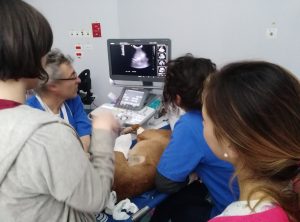Pituitary apoplexy-like disease in 4 dogs
Bertolini G, Rossetti E, Caldin M.
Pituitary apoplexy-like disease in 4 dogs
J Vet Intern Med. 2007 Nov-Dec;21(6):1251-7
Scarica la pubblicazione
Abstract
BACKGROUND: Pituitary apoplexy in humans is a clinical syndrome resulting from sudden infarction, hemorrhage, or both in a normal or an adenomatous pituitary gland.
OBJECTIVE: Describe a clinical syndrome in dogs similar to pituitary apoplexy in humans.
ANIMALS: Four dogs exhibiting a sudden onset of neurologic signs.
METHODS: A retrospective study was used, including clinical examination, computed tomography (CT), postmortem examination, and histopathology of the brain. Pituitary tissue from 3 of the dogs was subjected to immunocytochemistry.
RESULTS: Four dogs (2 Mongrels, 1 Bordeaux Dog, and 1 Cocker Spaniel; median age, 11 years; median body weight, 20.5 kg) presented with acute neurologic signs including depression (n = 3), behavioral changes (n = 1), vision loss (n = 1), seizures (n = 1), and collapse (n = 1). CT disclosed suprasellar infarction, hemorrhage, or both associated with a pituitary macroadenoma in 3 dogs and a frank hemorrhage in a nonadenomatous pituitary gland in 1 dog. CT findings were correlated with postmortem findings, and pituitary apoplexy was confirmed by histopathology and immunocytochemistry of the pituitary tissue.
CONCLUSIONS AND CLINICAL IMPORTANCE: This study provides histopathologic evidence of pituitary apoplexy in dogs. The results are relevant for future diagnosis and treatment of pituitary disease in dogs.






 Il Direttore Sanitario Dott. Marco Caldin
Il Direttore Sanitario Dott. Marco Caldin